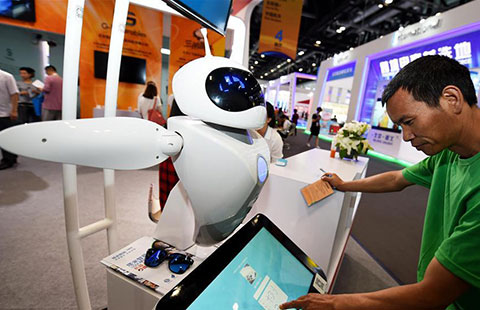China's manufacturing output reading stays flat in May
By Wang Yiqing (China Daily) Updated: 2016-06-02 09:27China's official manufacturing purchasing managers index has remained in expansionary territory for the third consecutive month.
It registered 50.1 in May, the same as in April after dropping from 50.2 in March, the National Bureau of Statistics said on Wednesday.
The index is designed to gauge activity in the manufacturing sector. A reading above 50 indicates expansion of activities, while one below this level suggests contraction.
A research note from Minsheng Securities said the May reading shows that manufacturing growth has slowed marginally but remains stable above the demarcation line of 50, and has yet to fall to a critical point that triggers policy easing.
Pressure from the economic downturn in the second quarter is not significant because of the follow-up effect of the real estate boom and increasing infrastructure construction investment in earlier months, the note added.
Of the PMI's five subindexes, production, new orders and suppliers' delivery times were above the critical reading of 50, while employment and raw material inventories were below the level.
The production subindex has been above 52 for three consecutive months-a sign of steady manufacturing production growth. But the new orders subindex continued to decline, to 50.7 in May from 51 in April and 51.4 in March, indicating pressure on corporate production in coming months.
NBS economist Zhao Qinghe said the May PMI reading indicates that China's structural adjustment and reduction of excess capacity have made further headway.
The official PMI, compiled by the NBS and the China Federation of Logistics and Purchasing, mainly monitors medium-sized and large enterprises in China.
But the Caixin/Markit Manufacturing PMI, which mainly assesses small and mid-sized enterprises, dropped to 49.2 in May from 49.4 in April. It was the 15th consecutive month that the Caixin PMI reading had been below the critical reading of 50.
Zhong Zhengsheng, director of macroeconomic analysis at research company CEBM Group, said, "The government still needs to make full use of proactive fiscal policy measures accompanied by a prudent monetary policy to prevent the economy from slowing further."
- BOC Aviation ends flat on HK debut
- Patent deals help Xiaomi expand
- MasterCard, rural co-operatives in Zhejiang launch credit card
- Community advertising should benefit homeowners
- China Merchants Group plans network of ports, terminals
- China's Gay app Blued taps into pink economy
- Softbank to sell $7.9b stake in Alibaba
- Performers wanted for Shanghai Disney park

















